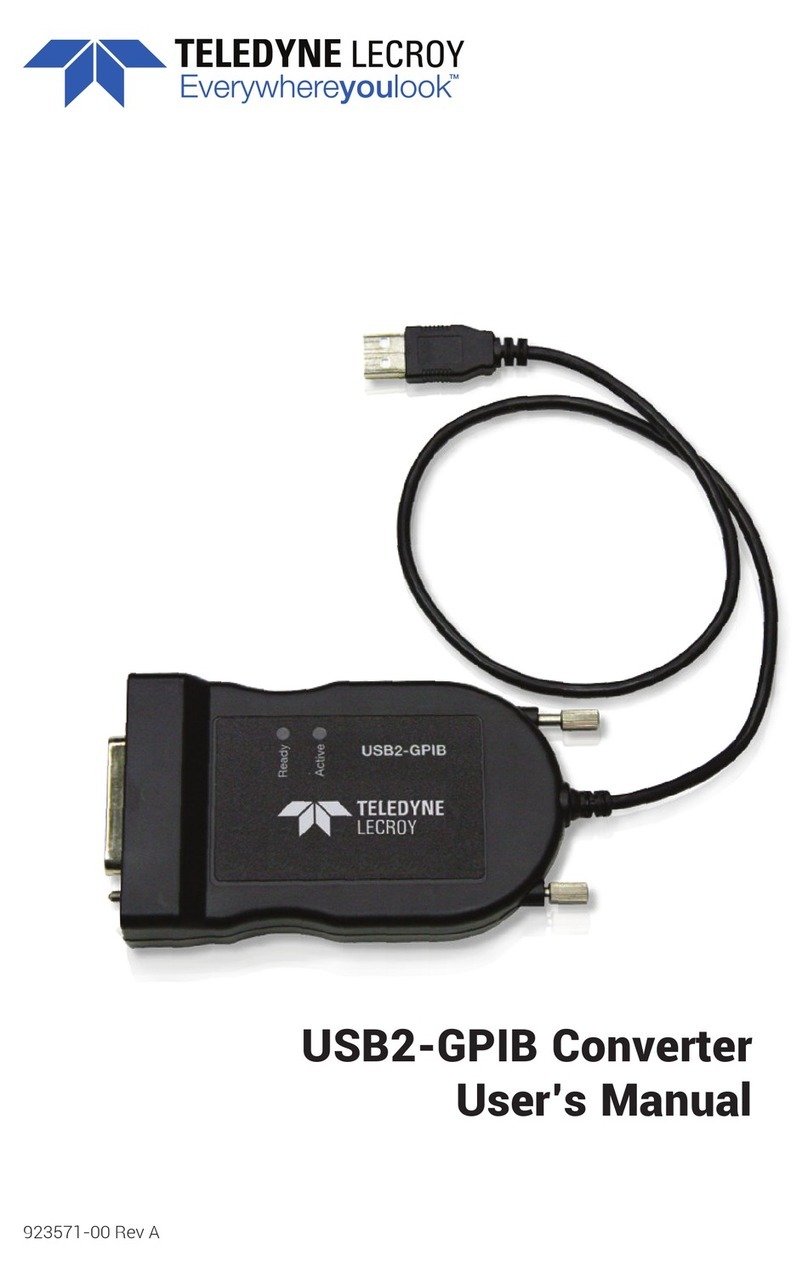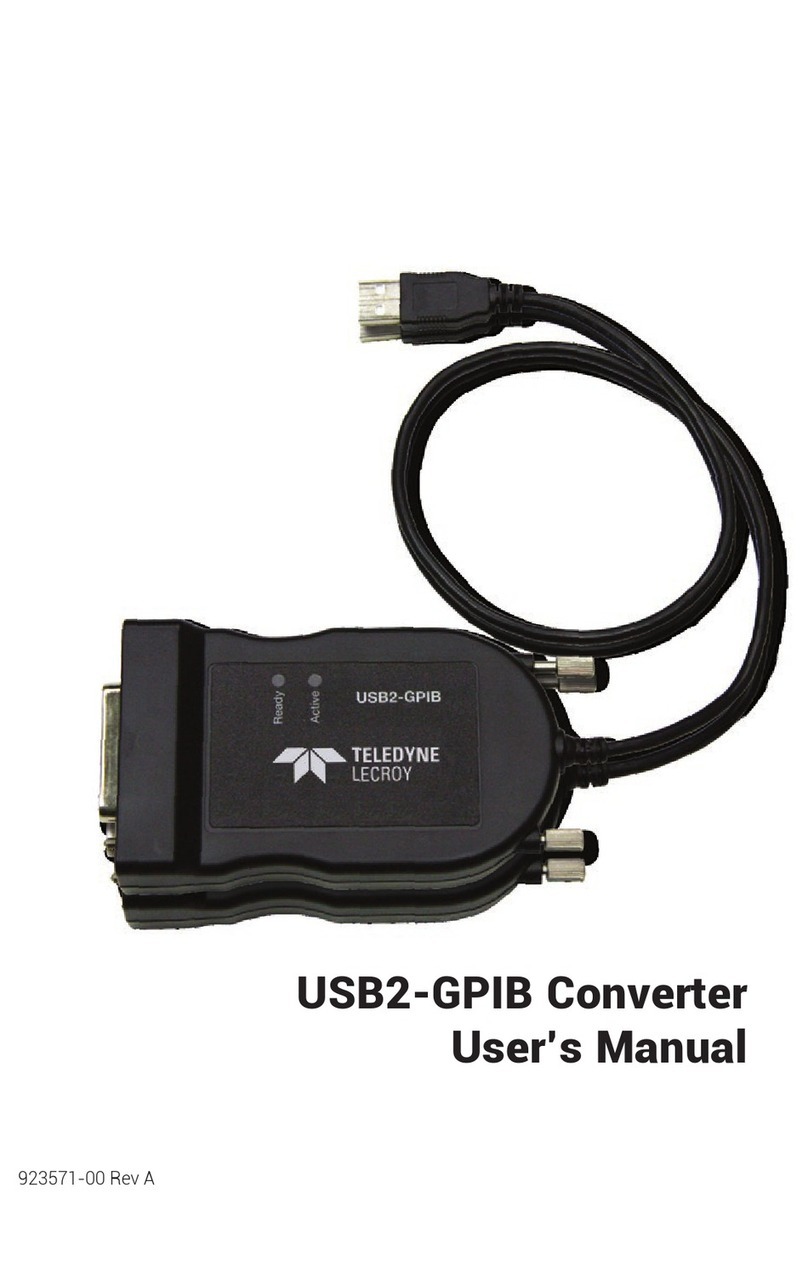OE695G Optical-to-Electrical Converter
2
Introduction
The OE695G is designed to help troubleshoot optical-to-electrical signal
integrity issues at the board level. For system integrators who measure both
electrical and optical signals in their products, the OE695G provides electrical
measurements on optical signals, while taking full advantage of the Teledyne
LeCroy real-time oscilloscope tool set and the debugging capabilities of the
Teledyne LeCroy Serial Data and Crosstalk Analysis software options.
When connected to the oscilloscope, the OE695G becomes an integrated
part of the oscilloscope. Power is supplied to the OE695G by the
oscilloscope (no external power supply is needed), and the OE695G
communicates to the oscilloscope its identity and scaling information. The
Optical Wavelength, Dark Calibration and Reference Receiver functions are all
controlled from the oscilloscope’s user interface.
The OE695G is unique in that it operates with a real-time oscilloscope, not a
sampling oscilloscope, and uses a digital signal processing (DSP) filter to
enable a user-selectable reference receiver response. Since the optical input
signal is input to a real-time oscilloscope, it is possible to use the contiguous
data acquisition of the real-time oscilloscope to obtain serial data pattern
knowledge and provide Tj, Rj, and Dj decomposition to very high accuracy,
like what is done with high-speed electrical serial data signals. The low cost
and general utility of this optical to electrical converter makes it ideal for
those who are already using real-time oscilloscopes for electrical serial data
measurements, and need to also measure optical serial data signals as well.
The OE695G is compatible with a variety of Teledyne Lecroy oscilloscopes
running firmware version 6.9.0.0 or later. Check the oscilloscope product
page at teledynelecroy.com/oscilloscopes for compatibility.































